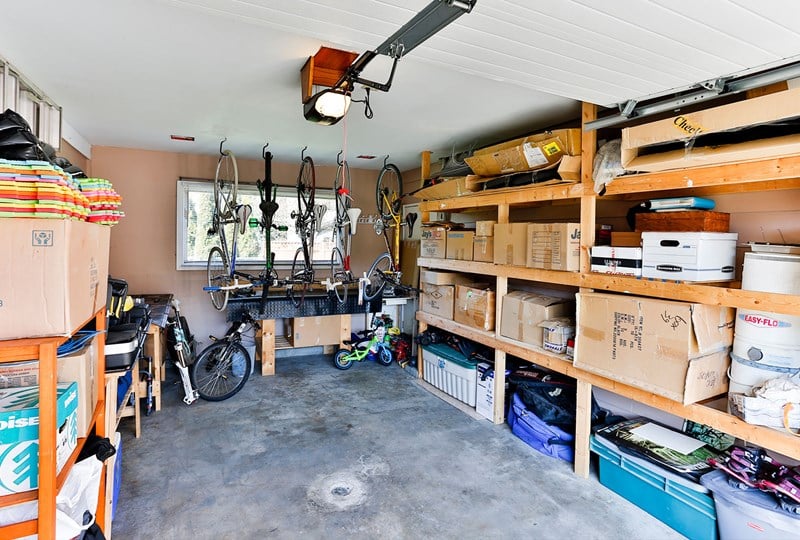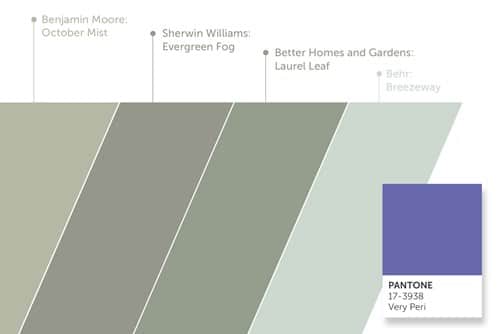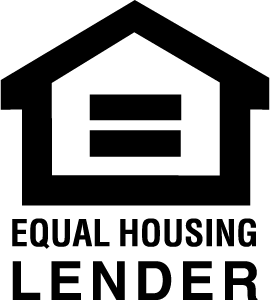Fill out the form below or call at

Key insights:
- Sort and store your belongings by type. Sports equipment and lawn supplies should each have designated spaces in the garage.
- Invest in a shelving system to safeguard your items up and off the garage floor.
- For maximum organization, create consistent labels for all your storage bins.
Be sure to follow these garage organization strategies to make the most of your space plus save time, sanity and money by keeping the clutter away.
Prior to organizing your garage, make a list of what you’d like to achieve throughout the cleaning process. With these benchmarks in mind, you can stick to a clear plan so you don’t get sidetracked as you clear the clutter.
Here are some questions to ask yourself when planning a garage cleanup:
Plastic storage containers can be expensive, but they’re also a good way to deter critters and protect against water damage. Determine in advance what you’ll want fully protected in your garage storage, then check the big box stores and ads for deals.
Investing in air-tight storage containers will aid in arranging your belongings, and they’ll also help prevent damage over the months and years.
You may also consider adding:
Some homeowners may even consider adding drywall to one area of an unfinished garage in order to accommodate a wall storage system.
To facilitate a more efficient organization process, make piles or designate areas for different types of garage items, including:
If you find items that haven’t been touched in years, it’s time to part ways. Box up unused things and label them for donation, sale or disposal. If you start to feel indecisive, step aside and let the piles sit overnight. Come back fresh in the morning to make the final call.
Designate areas in the garage according to their purpose and sort and store items accordingly. Doing so will help create a functional and efficient space.
For example, use the space closest to the house for items that you access often, including recycling bins. Stow the sports equipment in the areas closest to the outside or door of the garage, as these items will likely travel in and out frequently. You may also create a mini workspace for the projects you tackle inside the garage, keeping your most-used tools handy and grouping similar tools together.
Pro tip: Locate work stations, chargers, and power tools near electrical outlets so you won’t need to move things elsewhere when you need to use them.
Simply put, piles and stacks on the floor are a non-starter. Store items off the floor of your garage to protect and maintain them, especially during temperature fluctuations. Shelves or other wall systems increase the stability of your stored belongings while enhancing the garage’s visual appeal and maximizing space.
When organizing your things on shelves, keep accessibility in mind. Start by placing your most-used items within arm’s reach, then stow away seasonal or rarely-used items in higher storage.
Position clean, easy-to-read labels on all storage bins. You can create labels with masking tape and a marker, or purchase special stickers or a label maker. Whatever method you choose, ensure that you always have supplies on-hand to create labels. If the contents of a bin change, you can stay organized by immediately updating the label on the box.
In addition, label each container consistently, with a tag placed on the top and all sides of the box or bin. This will help you locate items in your garage with ease.
Although they won’t make the scrapbook, photos that serve as evidence of your belongings may come in handy if you have to file a homeowners insurance claim for lost or damaged goods. If you spend the time organizing your garage, you may as well catalog your items along the way.
With these simple tips and some sweat equity, you’ll be well on your way to an organized garage. Get started on your decluttering and cleanup process now for more space and better efficiency.
If you’re cleaning in preparation for a home sale, reach out to Edina Realty or one of our agents. We’re here to help you move forward.

Homeownership can be complicated, but we also think it’s one of the most rewarding ventures out there. In our series, Ask an Edina Realty Lawyer, we are hoping to demystify some of the trickier aspects of buying, selling, and owning a home.
In this edition, one of our lawyers recaps how buyers and sellers can protect themselves against cybercrime and other online security breaches.
Dear Edina Realty Legal,
There’s a lot of talk about cybercrime in the news. Does this affect the real estate industry?
Unfortunately, it does. These cyber-criminals — people who commit theft using the internet, email, and other technology — will look anywhere for money to be stolen. And that includes real estate transactions. But if you’re careful, you can avoid falling prey to these schemes.
Across the country, the real estate industry has seen a significant increase in the efforts of cyber-criminals to steal money out of real estate transactions. These scams are ever-changing and include posting fraudulent advertisements for rental properties seeking to steal from innocent renters and scammers pretending to be owners of vacant land with the intent of absconding with the buyer’s money. Perhaps the biggest scam (and potentially, most devastating) involves wire fraud. Here are the general elements of how that works:
Real estate fraud accounts for hundreds of millions of dollars in losses. In fact, the FBI reports $350 million in losses from real estate fraud in 2021.
That may sound a bit scary, but there are precautions you can take to protect your money. These rules can be applied to every technological aspect of your daily life, not just if you are involved in a real estate transaction:
Cyber-security is a top priority at Edina Realty. Edina Realty has implemented many security procedures to prevent criminals from getting access to our systems and your information. We are constantly evolving to meet the threats of these cyber-criminals as they become more sophisticated.
The Edina Realty Legal Department serves as in-house counsel for Edina Realty and does not represent private clients. This insight is not intended to provide legal advice.

Key Insights
- A contingent home is under contract with another buyer, but the final sale is dependent (contingent) on a specific set of criteria.
- There are several different types of contingencies.
- You can exclude “active contingent” properties from your search results on EdinaRealty.com.
If you’re a homebuyer searching for homes online, you may find yourself falling for properties that are labeled “Active contingent,” but do you know what that means?
In short, a contingent property is under contract with another buyer, but the final sale of the home is dependent (contingent) on a specific set of criteria that must be met. If the contingencies are not satisfied, the buyer or seller may be able to cancel the purchase agreement.
After some of a sale’s contingencies have been removed, the home will be listed as “pending.” A pending property status means that the sale is more imminent and both the buyers and sellers are marching toward the closing table. Those transactions are usually subject only to a financing contingency, a sign-off on the title, and a final walk-through of the property.
There are many different types of contingencies, but here are some of the most common scenarios.
Contingent, subject to inspection: The buyer and seller have signed a purchase agreement (contract), but the buyer is allowed to cancel the deal if the buyer does not like the results of the home inspection. Usually, these inspections take place a few days after the purchase agreement is signed.
Contingent, sale of another property: The buyer and seller have signed a purchase agreement, but the buyer is allowed to cancel if the buyer’s own home does not sell. This may be critical for the buyer, who is protected against having to buy before they have sold their current home. But the seller may call the contingency — which happens, often if the seller receives another offer — and the buyer may lose the deal if they cannot get their home sold within a short period of time. Likewise, a seller may list their home for sale contingent upon finding a new home.
Contingent, subject to third-party approval: The buyer and seller have signed a purchase agreement, but the seller’s lender must approve the sale because the sale proceeds will not be sufficient to pay off the seller’s mortgage loan.
Contingent, subject to statutory right of rescission: The buyer and seller have signed a purchase agreement, but the buyer has a limited period of time to cancel the contract under a state law that provides a rescission period for the purchase of condos, townhomes, or cooperatives.
There are also other contingencies, including those related to financing, that fit into a different category. Ask your REALTOR® for insights about these types of contingencies and how they could affect your home purchase or sale.
Technically, yes. But not all sellers will be interested in having buyers in their home after they’ve accepted a purchase agreement.
Your Realtor can help you weigh the pros and cons of touring a contingent house; they can also help you set up the desired tours.
In that case, you’ll want to limit your search to homes with a “For Sale” or “Coming Soon” listing status. When searching on EdinaRealty.com or our mobile app, you can filter by status to include or exclude listings that are:

Contingencies protect buyers from varying circumstances that are beyond their control and that can cause financial strain.
Buyers who worry about purchasing a “money pit” can feel reassured by an inspection that shows the house is free of major defects and doesn’t require immediate repairs.
Buyers who are submitting an offer contingent on their home sale don’t have to worry that they will be stuck with two mortgages if their current property lags on the market.
In a low-inventory market, sellers hold the advantage, and buyers often compete over a shortage of homes listed for sale. Some buyers choose to make offers that are free and clear of all contingencies as a way to stand out from a crowded field. This is not without risk, and your Realtor can help you determine if it is the right strategy for you.
Sellers who wish to move may be eager to nix the inspection and all other contingencies, and head straight to closing.
The main benefit of accepting a contingent offer is that it indicates that a sale is in process. Cancellations can be due to contingencies, financing, the buyer losing a job, and more.
In most cases, the accepted offer leads to a closed and final sale — the ultimate goal for any home seller.
To prevent a situation where the contingency tanks the sale, sellers can also entertain “backup offers.” A backup offer is exactly what it sounds like — it means the seller can have a second prospective buyer on the hook if the first accepted offer does not go through.
Sellers who wish to go down this path can work with their Realtor to accept a backup offer that ensures the secondary offer is legally binding and effective immediately, should the initial buyer back out, but also allowing the seller to cancel the back-up offer if the first transaction is going to close.
We know there are a lot of real estate terms to learn. Reach out to our customer care team anytime to get help or to be connected with a Realtor in your area. We are here to help you move forward in your home search and purchase.
Note: The property search on edinarealty.com uses listing data that is provided by several local Multiple Listing Services (MLSs). Some MLSs do not offer an Active Contingent status. As a result, it is possible to exclude Active contingent properties from a search and still get results that might include properties that are under contract.

Key insights:
- After a wild market in spring of 2021, inventory and prices are moving toward more sustainable levels.
- While home price growth is slowing, affordability may be impacted by rising interest rates in 2022.
- Sellers continue to hold an advantage, but they still need to stage and improve their homes to earn the best price at closing.
- Some COVID-era trends, including home offices, flexible spaces, and outdoor space, will be in demand long after the pandemic is over.
As president of Edina Realty, Sharry Schmid provides guidance and direction to over 2,300 REALTORS®.
In the spring of 2021, the housing market experienced frenzied activity, due to pent-up buyer demand and the effects of persistently low inventory levels. Some buyers, particularly those looking for starter homes, found themselves losing bid after bid, while sellers were reporting bidding wars on homes that had been listed for mere hours. Since then, this level of competition has moderated some, but we are still far from equilibrium.
While no one can predict the future, most housing experts are in agreement on a few key factors. Here’s what buyers, sellers and homeowners can expect from the housing market in 2022.
Overall, buyer demand will continue to out-pace the supply of available homes for sale. Buyers should be prepared to be patient as they make offers on homes in their desired areas and price points.
For sellers, the forecast continues to look pretty sunny. However, sellers should remember that the market has slowed since its 2021 peak.
While we are not out of the pandemic, some trends that began with COVID-19 are here to stay. The primary trend is the growing desire to move further away from the urban core and to expand on outdoor space, which is a reversal from the demand we saw in inner-ring suburbs over the last decade.
I’m proud to work alongside more than 2,300 local market experts who help buyers and sellers in every city across Minnesota and western Wisconsin. If you’re considering buying or selling in the next year, reach out to Edina Realty or your local real estate agent to start the process.

Key insights:
- Focus on bringing out the best features of your home with subtle additions of holiday decor.
- Use fresh greenery to help your home’s exterior pop against the white winter landscape.
- Keep your lighting simple. The space should feel natural and bright, but not overly festive.
Holiday home staging requires a delicate balance. While it’s fun to add festive elements to your space, it’s most important to focus on your property’s top features when staging your home for sale.
Here, we’re sharing insights from top Edina Realty agents on how to embrace the season tastefully – and expertly stage your home to sell over the holiday season with success.
Remember to consider the size of your room before you buy a holiday tree. You’ll want to decorate with a tree that complements the space and helps create the illusion of a larger room.
Keep in mind, placing a large tree in an already tight space could make the room look smaller and potentially turn off some buyers. On the other hand, a tall tree can be used to your advantage when showcasing a room that already features impressive height.
When selling before the holidays, it can be tempting to toss up your typical seasonal decor. This time around, you’ll want to take extra care to match your holiday decor to your home’s current color and design scheme.
When in doubt, lean into natural design elements, such as:
Just as you would stage throughout the rest of the year, use accessories to draw attention to your home’s best features. Some ideas to highlight (but not hide) your home’s most impressive areas include:
Holiday decor can be used to accentuate your home’s best features, but don’t use a snowglobe or ornamental stocking to cover up anything that buyers should know about. During any time of the year, it’s important to disclose necessary information to potential buyers.
“Adorning the front porch or walkway with potted spruce tops shows an effort in making a house a home. And, when all else is barren, fresh greenery is all the more beautiful,” said Jen Kyllonen, an Edina Realty agent from the 50th and France office.
And, if you have existing shrubs on your property, keep them free of snow. The extra greenery from the shrubs will help your home’s exterior pop against the snowy winter backdrop.
Holiday lights are a great way to brighten up your home’s exterior, but it’s important to create a simple and classy setup. Here are some ways to enhance your home with subtle lights:
In other words, be sure your home stands out at night, but don’t fight to be your neighborhood’s Clark Griswold.
If you’re thinking of staging a home to sell, it’s time to talk with a local expert about putting your home on the market. Reach out to Edina Realty or one of our agents today for a free, no-obligation estimate of your home’s true market value — and get a jump start on selling your home this holiday season.

If you’ve seen headlines about the housing market in recent months, you likely have noticed gloom and doom reports about higher interest rates and lower pending sales. And while it’s true that increased interest rates are impacting the buying power of would-be purchasers, Edina Realty president Sharry Schmid says there’s no reason to fret about the lower sales numbers or to begin talking about a housing downturn.
“The sky is not falling,” Schmid said in a recent interview. “In fact, once you put the news and data points into context, it shows that we — especially on a local level — are in a better position than many think. And current market dynamics are much different from the housing crisis of 2008.”
First, Schmid said, it’s important to take note of a few national trends, and then focus squarely on what’s happening in our market of Minnesota and western Wisconsin.
She cites three important stats:
“It’s easy to compare equity gains on the coasts — which in some cases have reached $100,000 or more1 in the last year — to equity gains in Minnesota or Wisconsin and think, ‘This is a problem, our prices aren’t rising as fast.’ But in fact, we are showing a healthy level of appreciation when you consider the cost of housing here. We have our extremely strong job market, driven by a diverse range of major employers,” said Schmid.
“Volatility is a key ingredient for both housing bubbles and recessions, so our strong and stable position should provide homeowners, sellers and buyers with some peace of mind.”
After historically low rates in the 3-percent range for the last several years, the Fed has been increasing rates in 2022 as a way to attack inflation.
When interest rates rise, it brings down the buying power of house hunters. This means that buyers may have to lower their budgets in order to afford a home. But before assuming that buyers will be priced out of the market, it’s important to look into the details, said Schmid.
Locally, buyers who are purchasing a median-priced home, with an average mortgage rate on a 30-year loan and 10% down would pay about $2,200 for their mortgage principal, interest, taxes and insurance3.
“Home prices are rising, but rental costs are, too,” said Schmid. “So while it’s true that buyers may have to lower their home budgets, they can take comfort in knowing that they’re making a monthly payment one way or another. It will benefit them greatly if, in the long run, their housing payments are going to a home they own.”
Buyers can finally exhale, Schmid suggests, as the market’s frenetic pace should slow down in coming months. “While homes won’t lag on the market for months at a time, buyers should be able to take more time looking at homes, and have more options to choose from. Overall, they should feel a bit less stress as they find the right home for their future.”
When a homeowner has a lower interest rate on their existing mortgage than they would receive for a new mortgage, they may be unsure about selling their home and re-entering the market as a buyer. Recent headlines have indicated that if enough homeowners decide not to sell, it could exacerbate the already low-inventory market.
But that is also an unlikely outcome, said Schmid. In addition to interest rates, sellers have a number of factors to consider, including their equity position and loan options. “Many sellers are in a great position to use their earned equity for a down payment and to buy down interest rates with mortgage discount points,” said Schmid.
“Furthermore, not all homeowners have a 3% interest rate right now; there’s a significant portion of homeowners who are locked in at higher rates.” In Minnesota and Wisconsin, she said, more than 50% of homeowners have a mortgage interest rate of 4% or above. That makes them unlikely to consider rates as an obstacle and to put their plans on hold.
“While buying and selling a home is a financial decision, it’s also an emotional one. There will always be people who need more space, less space, or to move to a town that’s a better fit for them. Interest rates may impact some homeowners’ plans, but it won’t be a primary driver in seller behavior in the long term,” said Schmid.
Sellers should scrap what they heard at the height of the market in 2020 and 2021, said Schmid. Homes will be less likely to sell in one day in multiple offers, or to sell to buyers, sight-unseen.
Still, said Schmid, “Many sellers will see their homes go for over asking, even if they shouldn’t expect that outcome. And most importantly, your home will sell, and it will sell for a good and fair price. It’s still a great time to be a seller in Minnesota and Wisconsin.”
At Edina Realty, we understand that it’s easy to get wrapped up in national headlines about the housing market. But we also know that real estate is local — and no one knows more about the local housing market than we do.
For help buying or selling, or one-to-one insights on the best path forward for you and your family, reach out to Edina Realty or your agent today.
Sources
1. Keeping Current Matters
2. Star Tribune
3. Minneapolis Area Association of REALTORS® and RMLS, Inc. Data pulled in July 2022 using current rates and median-priced homes for the 13-county Twin Cities metro area.

FHA loans, or “helper loans,” are backed by the Federal Housing Administration to help first-time buyers or buyers with less-than-perfect credit purchase a home. The FHA takes on a higher amount of risk in order to provide buyers with these loans, so loan limits are placed to cap how much money borrowers can request.
Most Wisconsin counties have a 2022 FHA loan limit of $420,680. While a couple of the more expensive counties have a higher limit of $448,500, including:
If you’re considering an FHA loan in 2022, here are the FHA loan limits for each county in Wisconsin.
Remember, some cities span more than one county. Ask your REALTOR® or lender about the loan limit you can expect if you’re searching for homes near county lines.
Wisconsin county | FHA loan limit for 2022 |
Adams County | $420,680 |
Ashland County | $420,680 |
Barron County | $420,680 |
Bayfield County | $420,680 |
Brown County | $420,680 |
Buffalo County | $420,680 |
Burnett County | $420,680 |
Calumet County | $420,680 |
Chippewa County | $420,680 |
Clark County | $420,680 |
Columbia County | $420,680 |
Crawford County | $420,680 |
Dane County | $420,680 |
Dodge County | $420,680 |
Door County | $420,680 |
Douglas County | $420,680 |
Dunn County | $420,680 |
Eau Claire County | $420,680 |
Forest County | $420,680 |
Grant County | $420,680 |
Green County | $420,680 |
Green Lake County | $420,680 |
Iowa County | $420,680 |
Iron County | $420,680 |
Jackson County | $420,680 |
Jefferson County | $420,680 |
Juneau County | $420,680 |
Kenosha County | $420,680 |
Kewaunee County | $420,680 |
La Crosse County | $420,680 |
Lafayette County | $420,680 |
Langlade County | $420,680 |
Lincoln County | $420,680 |
Manitowoc County | $420,680 |
Marathon County | $420,680 |
Marinette County | $420,680 |
Marquette County | $420,680 |
Menominee County | $420,680 |
Milwaukee County | $420,680 |
Monroe County | $420,680 |
Oconto County | $420,680 |
Oneida County | $420,680 |
Outagamie County | $420,680 |
Ozaukee County | $420,680 |
Pepin County | $420,680 |
Pierce County | $448,500 |
Polk County | $420,680 |
Portage County | $420,680 |
Price County | $420,680 |
Racine County | $420,680 |
Richland County | $420,680 |
Rock County | $420,680 |
Rusk County | $420,680 |
Sauk County | $420,680 |
Sawyer County | $420,680 |
Shawano County | $420,680 |
Sheboygan County | $420,680 |
St. Croix County | $448,500 |
Taylor County | $420,680 |
Trempealeau County | $420,680 |
Vernon County | $420,680 |
Vilas County | $420,680 |
Walworth County | $420,680 |
Washburn County | $420,680 |
Washington County | $420,680 |
Waukesha County | $420,680 |
Waupaca County | $420,680 |
Waushara County | $420,680 |
Winnebago County | $420,680 |
Wood County | $420,680 |
Purchasing a home will likely be one of your largest financial investments — and your mortgage matters. To move forward with the process of buying a home and selecting a loan type, contact Edina Realty or your agent today. We’re here for you, seven days a week.
Edina Realty Mortgage is an affiliate of Edina Realty. See Affiliated Business Arrangement Disclosure Statement
Prosperity Home Mortgage, LLC may operate as Prosperity Home Mortgage, LLC dba Edina Realty Mortgage in Minnesota and Wisconsin. All first mortgage products are provided by Prosperity Home Mortgage, LLC. dba Edina Realty Mortgage. (877) 275-1762. Prosperity Home Mortgage, LLC products may not be available in all areas. Not all borrowers will qualify. Prosperity Home Mortgage, LLC dba Edina Realty Mortgage is licensed in Minnesota and Wisconsin. Prosperity Home Mortgage, LLC is licensed by the Delaware State Bank Commissioner. Massachusetts Mortgage Lender License ML75164. Licensed by the NJ Department of Banking and Insurance. Also licensed in AK, AL, AR, AZ, CA, CO, CT, DC, FL, GA, ID, IL, IN, KS, KY, LA, MD, ME, MI, MN, MO, MS, MT, NE, NC, ND, NH, NM, NV, OH, OK, OR, PA, RI, SC, SD, TN, TX, UT, VA, VT, WA, WI, WV and WY. NMLS ID #75164 (NMLS Consumer Access at http://www.nmlsconsumeraccess.org/) ©2022 Prosperity Home Mortgage, LLC.

Key insights:
- The 2021 Colors of the Year are Ultimate Gray, Illuminating, Aegean Teal and Urbane Bronze.
- Make an impression by staging your home for sale with the Color of the Year that best complements your space.
- Homebuyers tend to prefer neutral palettes. Consider Illuminating and Aegean Teal in small accent pieces, like pillows or picture frames.
The Color of the Year is an anticipated announcement, providing artists, designers and decorators with an artistic message and muse. The Color of the Year also tends to impact home trends and furnishings, which is especially important for home sellers.
Here are insights you can use as you decorate or stage your home with the 2021 Color of the Year.
Pantone, Benjamin Moore and Sherwin Williams all announced 2021 Colors of the Year, each with unique hues and selection explanations.
Pantone: Ultimate Gray and Illuminating
Both Ultimate Gray, an elemental gray, and Illuminating, a happy yellow, were selected by Pantone to inform the upcoming year. Pantone describes this pair of colors as “practical and rock solid but at the same time warming and optimistic.”
Benjamin Moore: Aegean Teal
Described by Benjamin Moore as balanced and comforting, Aegean Teal is a soft hue that subtly upgrades any space. Additionally, Benjamin Moore created a palette of colors that harmonize with Aegean Teal, making it easier than ever for homeowners to work with this color trend.
Sherwin Williams: Urbane Bronze
Urbane Bronze is an organic color providing a gentle reminder to slow down and find your sanctuary, whether in nature or elsewhere. At the same time, this hue creates warmth and sophistication in any space, which is perfect for those looking to remodel or sell their home.
Keep in mind, it’s okay that each entity has different colors touted as the Color of the Year. In fact it’s encouraging to witness the variety of perspectives regarding color and design. Having a variety of trend colors gives homeowners more opportunity as they reimagine their spaces.
Selling and staging your home with the 2021 Color of the Year
When staging a house for sale, it’s important to neutralize the space so the future homeowners can imagine themselves living in the area. With that being said, the occasional bright accent or interesting decor piece can add an element of cheer and charm to the space.
Ultimate Gray is a strong yet neutral color that can create a foundation when staging. Placing Ultimate Gray on large surfaces within your space will emphasize its brilliance while maintaining a sense of practicality.
Looking to add some foundational decor pieces to your home while staging? Couches or chairs in Ultimate Gray can provide a solid base for the rest of the space you plan to stage. If you’re ready to pull out the paint brushes, this elemental shade works well on painted tables, wooden furniture and walls that could use a darker-but-neutral hue.
Bright colors are best used sparingly or for highlights that help freshen up a room. Illuminating is an optimistic color that will help you achieve an element of positivity and light in your space.
Some unique ways to incorporate touches of Illuminating throughout your property include accent pieces like picture frames, vases, lampshades, throw pillows or bathroom accessories. If you are really into this uplifting hue, opt for a larger pop of color and include Illuminating within a patterned rug or on your front door.
While not as bright as Illuminating, Aegean Teal makes a statement with a softer tone. This balanced hue is a perfect pop of color that is calm enough to cover expansive spaces, such as accent walls, decorative pillows, large art pieces or rugs.
Given its soothing presence, Aegean Teal could also be used in a bedroom. Try staging your master suite with Aegean Teal walls, bedding, lamp, dressers or drawer pulls.
Urbane Bronze is a deep, regal tone that may be best used in a sophisticated home or room, such as a formal dining area or living room. Other placement options for this color include a home office, study or chef’s kitchen.
Get the full effect of Urbane Bronze by situating it near mixed metals or wooden features in your space; this will highlight both the rich bronze color and the earthy elements.
Ready to embrace a 2021 Color of the Year while staging your home? Pull out the paintbrushes and Pinterest boards to begin incorporating your favorite hue throughout your space!
When you’re ready to sell your home, reach out to Edina Realty or your agent. From insights on home staging trends to the closing table, we’re here to help you every step of the way.

Key insights:
- Add insurance coverage to items that you use at your lake home, such as boats, docks and guest houses.
- Umbrella coverage or reduced content coverage may make the most sense. Consider alternative insurance options to meet your exact needs.
- Determine if flood insurance is necessary for your lake property.
Whether you buy a lake home for year-round living or summer retreats, the property will likely become your family’s oasis for rest and relaxation. To maintain this peaceful getaway, you’ll want to secure a homeowner’s insurance policy that helps manage risks and costs should the unforeseeable happen.
Rest assured that your property is protected by choosing an insurance plan that meets your specific needs. Here are tips to insure your Minnesota or western Wisconsin lake house without paying for extra coverage.
Different insurance companies may have different rates for insuring lake homes or second homes, so you’ll want to get multiple quotes to determine who offers the strongest coverage at the best rate.
Here’s one example of how coverage and rates may vary by company: When insuring homes in lake country, some insurance companies may charge a lower premium if the property is in close proximity to the responding fire department. This is because when a fire department can get to the scene of a fire quickly, there is a lower chance of the entire property being damaged.
However, not all companies weigh the fire department location as heavily — and as a result, they may not offer the same coverage at a lower premium. To ensure that you’re getting the best coverage but not overpaying, shop around before selecting the best policy possible.
Unlike your primary residence, waterfront homes may have additional buildings on the property, including:
Limitations on separate structures vary by company, and typical homeowner policies may not cover the extra structures that you have at your lake home. You’ll want to increase your coverage to ensure these structures are fully protected.
Just as your lake home may provide a relaxing retreat for you and your friends, it can also be the hub for riskier activities like bonfires, tubing and other outdoor fun. While you may go out of your way to ensure everyone is safe – especially when hosting guests – accidents happen.
You’ll likely be liable for injuries that occur on premises, so you’ll want to be adequately covered if or when accidents happen. An umbrella liability policy is an effective and relatively inexpensive way to get that coverage.
For many lake homeowners, exploring nearby trails and cruising around the lake adds to the fun of being at the lake. Keep in mind, additional motorized vehicles — on land or the water — typically aren’t covered under the homeowner’s insurance policy for a waterfront property.
Talk with your insurance provider to get these vehicles covered by separate policies:
Generally lake homes have less personal property in them compared to primary homes. If a loss does occur, you’ll want to have brand-new items replaced within the lake home to get it back to normal as quickly as possible. Discuss with your local insurance professional if they have options to lower this coverage.
If your lake home is situated directly on the water, you may have inherited or added semi-permanent water structures to the property. Some examples include:
While you discuss your content coverage policy, ask your insurance agent about what coverage for these items might cost, and determine if you’d like to secure policies for them.
When purchasing a property near the water, it’s important to ask questions specific to lakeshore homes. You’ll want to inquire about fluctuating water levels and any history of flooding; be sure to conduct your own research on the area as well.
As with your primary residence, homeowner’s insurance for a lakeshore property doesn’t cover flooding. If the property is susceptible to flooding, you should secure a flood insurance policy.
With an insured waterfront property, you can have peace of mind that your house is fully protected. For more information on lakeshore homes, reach out to Edina Realty or your lakeshore agent. Moving forward with a REALTOR® is the best way to find and insure your dream home on the lake.
Edina Realty Insurance is an affiliate of Edina Realty. See Affiliated Business Arrangement Disclosure Statement.

Key insights:
- Minnesota homeowners in 13 metro cities will need to get a professional seller inspection before they sell their home.
- Each city that requires a TISH inspection has their own terms and costs. Be sure to follow them to the letter.
- There are ways to prepare your home for a TISH inspection, including checking common plumbing elements and smoke detectors.
In certain cities in the Twin Cities metro, a seller inspection is required before the home can be sold. This inspection is often called the “Truth-in-Sale of Housing” (TISH) report, or a “truth in housing” report.
Unlike a buyer’s inspection, which can hone in on quirks or inconsistencies, the TISH report is focused on risks to life or health that can be found within the home. The report is usually made up of a checklist of recommended or required fixes.
Once sellers receive their TISH report, they must complete the required fixes before closing. In some cases, if they aren’t able to complete the checklist of necessary repairs, the seller may negotiate with the buyer, who can perform the repairs post-close.
Buyers will be well aware of what the TISH report outlines, as sellers are typically required to include the report within the disclosures they provide potential buyers.
While the exact name of the inspection may vary from one city to the next, these Minnesota cities currently require sellers to get a TISH inspection (or similar report) from a licensed evaluator:
In recent years, a few cities — including Brooklyn Park, Crystal, Hopkins and Osseo — have removed their TISH requirements for home sellers.
Additionally, several cities don’t require a traditional TISH inspection, but they do require sellers to order an inflow/infiltration inspection to check for excess flow of clear water into the city’s sewer system:
Note that as of January 15, 2020, Minneapolis TISH reports include information on the energy efficiency of a home. Read more about these updates.
According to this WCCO story, there are three common (and inexpensive) repairs that homeowners should take care of prior to their TISH inspection.
Check to make sure your outdoor faucets have backflow preventers, or vacuum breakers. As a local inspection expert explains here, these valves ensure that water coming from your outdoor faucets only flows out and that any contaminated water that comes into contact with the hose doesn’t flow back into the city’s water supply.
For example, if you are filling a bucket with bleach and water, you only want the water flowing out — it could contaminate drinking water if the bleach flowed back through the faucet and into your home’s or your neighborhood’s water supply.
Depending on the city, missing backflow preventers could be marked as a required fix on a TISH report.
When was the last time you checked your smoke alarms — aside from when you charred that pizza last year? Give each alarm in your house a test or replace the batteries in each to be safe.
You’ll also want to check your city requirements to ensure you have the legally required number of smoke detectors in your home. In Minneapolis (and most areas), the requirement is to have a smoke alarm on every level and outside each sleeping area.
The WCCO report suggests filling up a sink or tub, then pulling the stopper out and watching the pipes to make sure you don’t have any plumbing issues. You should do this for all sinks and tubs, including laundry sinks or industrial tubs that you don’t use that often. If a pipe is leaking just a little bit, you may be able to fix it with a basic wrench tightening.
Our agents are local experts, and they can offer insights on how to hire a licensed local evaluator and the prep work you should put in before your TISH inspection. Contact Edina Realty or your REALTOR® for customized, local advice.


© 2003-2025 Edina Realty.
All rights reserved. Equal Housing Opportunity | Edina Realty - Real Estate, Mortgage and Title experts in Minnesota and western Wisconsin.
 ©2025 Prosperity Home Mortgage LLC. (877) 275-1762. 3060 Williams Drive, Suite 600, Fairfax, VA 22031. All first mortgage products are provided by Prosperity Home Mortgage, LLC. Not all mortgage products may be available in all areas. Not all borrowers will qualify. NMLS ID #75164 (For licensing information go to: NMLS Consumer Access at https://www.nmlsconsumeraccess.org) Arizona Mortgage Bankers License 1001252. Licensed by the Department of Financial Protection and Innovation under the California Residential Mortgage Lending Act. Licensed by the Delaware State Bank Commissioner. Georgia Residential Mortgage Licensee. Massachusetts Mortgage Lender and Mortgage Broker MC75164. Licensed by the NJ Department of Banking and Insurance. Licensed Mortgage Banker-NYS Department of Financial Services. Rhode Island Licensed Lender. Rhode Island Licensed Loan Broker. Rhode Island Licensed Third-Party Loan Servicer. Also licensed in AK, AL, AR,AZ, CO, CT, DC, FL, ID, IL, IN, KS, KY, LA, MD, ME, MI, MN, MO, MS, MT, NC, ND,NE, NH, NM, NV, OH, OK, OR, PA, SC, SD, TN, TX, UT, VA, VT, WA, WI, WV and WY.
©2025 Prosperity Home Mortgage LLC. (877) 275-1762. 3060 Williams Drive, Suite 600, Fairfax, VA 22031. All first mortgage products are provided by Prosperity Home Mortgage, LLC. Not all mortgage products may be available in all areas. Not all borrowers will qualify. NMLS ID #75164 (For licensing information go to: NMLS Consumer Access at https://www.nmlsconsumeraccess.org) Arizona Mortgage Bankers License 1001252. Licensed by the Department of Financial Protection and Innovation under the California Residential Mortgage Lending Act. Licensed by the Delaware State Bank Commissioner. Georgia Residential Mortgage Licensee. Massachusetts Mortgage Lender and Mortgage Broker MC75164. Licensed by the NJ Department of Banking and Insurance. Licensed Mortgage Banker-NYS Department of Financial Services. Rhode Island Licensed Lender. Rhode Island Licensed Loan Broker. Rhode Island Licensed Third-Party Loan Servicer. Also licensed in AK, AL, AR,AZ, CO, CT, DC, FL, ID, IL, IN, KS, KY, LA, MD, ME, MI, MN, MO, MS, MT, NC, ND,NE, NH, NM, NV, OH, OK, OR, PA, SC, SD, TN, TX, UT, VA, VT, WA, WI, WV and WY.
By searching you agree to the end user license agreement. Find homes for sale in Minnesota and Wisconsin.
6800 France Ave. S., Suite 230 Edina, MN 55435

